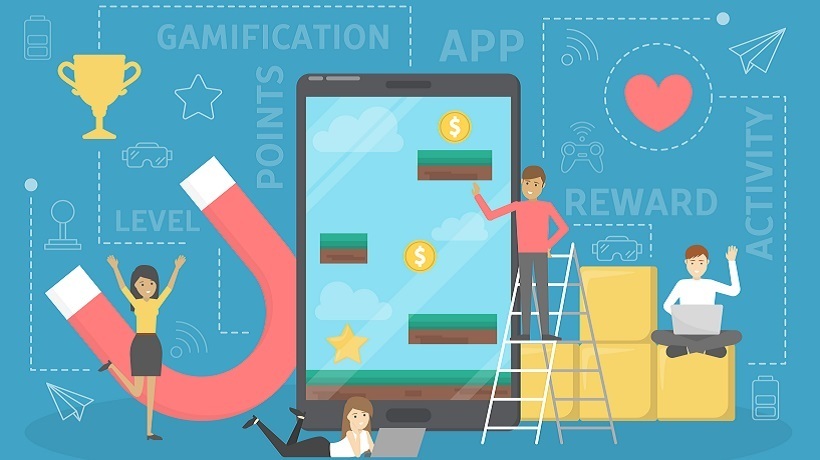How To Use Gamification Effectively In 3 Steps
There are no 2 ways around it: sometimes online training isn’t super interesting. Compliance documents can be dry. Insurance policies, while important, aren’t usually written to engage an audience.
So, what can you do to inspire a genuine interest in learning and professional growth within your organization? One way is through gamification.
Gamification is the addition of gaming elements to your Learning Management System—things like levels, points, badges, leaderboards, and user profiles. It’s a great way to boost completion rates and encourage learners to work through material they might otherwise skip or skim through.
You might give the concept the side eye. But it really works. Remember when Volkswagen gamified stairs to encourage people to walk rather than use an escalator?
Of course, effectively working gamification into your Learning and Development strategy isn’t as simple as attaching badges to dry pieces of content. Let’s dive into a few steps from Wendy Hsin-Yuan Huang and Dilip Soman, researchers from the Rotman School of Management at the University of Toronto, and how you can successfully weave gaming techniques into your LMS.
1. Understand The Context
Take some time to think about who is going to work through the learning material and the amount of effort it will take or how important the information is to the person’s ability to do their work. Context is always important.
The goal of gamification is to appeal to a learner’s desire to compete and achieve in addition to learning. Badges, for instance, recognize and promote incremental learning gains. When those badges are public and coworkers can see them, it lends a sense of public accountability to continued learning.
Be mindful of how a given gamification technique will work in the LMS, too. Assigning a point value to content won’t motivate learners much if there isn’t a leaderboard or if their user profiles aren’t visible.
2. Define Learning Objectives
This is straightforward enough for your L&D team. They need to know what learners ought to take away from a given course, such as food safety certification.
Where it can get tricky is communicating those specific expectations to learners. Some of the best ways to do this are through quality descriptions of the course and regular communication through the social features of your LMS. It’s just a good practice—the value of clarity of expectations in the workplace is well-established.
One trick is to make sure people know about the course and understand the purpose of it. Think of the course as a product and craft messaging—a sort of marketing plan—for when the material goes live.
3. Structure The Experience
The longer an online course, the harder it is for a learner to build up enough motivation to get started. They have to carve time out of the workday. When a course has multiple parts and might take an hour to finish, it’s a lot easier to push it back than to buckle down and work through the content piece by piece.
The way you build out and structure a course impacts the mental calculus a learner goes through when deciding whether they should start on a course. Be sure to set it up in parts, stages, or milestones like the researchers recommend.
The researchers from the University of Toronto found that when milestones are in place, learners view the overall learning objective as more achievable, which helps motivate them to get started.
An added benefit of breaking a course down into easily digestible parts is that you get a look at where learners get off track. If completion rates drop before the last section, do a deep dive into why. You’ll get a better understanding of the content and the audience and you'll be able to tweak the course to make it more effective over time.
Gamification
Figuring out the best way to gamify your learning content comes once you have a firm grasp on all the different pieces of your course.
The ways you can gamify your content are numerous, but the researchers group them into 2 broad categories: self and social. Self-elements are ones where the learners competing with themselves, such as badges, levels, or time restrictions. Social-elements are more interactive, like leaderboards.
Be mindful of the content’s difficulty when deciding whether to use self or social gamification techniques. If the course requires learners to grasp a difficult concept that’s outside their comfort zone, a social element might discourage some. Focus on challenging the learner individually to encourage them to try until they can grasp and apply the concepts.









